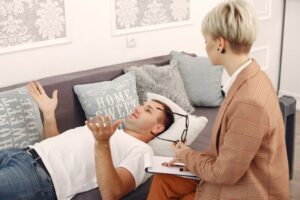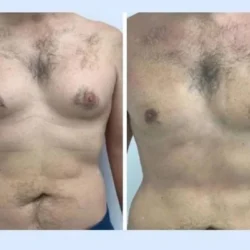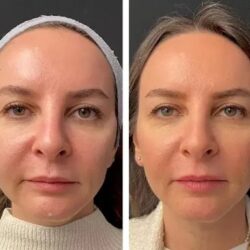Sleep disorders affect millions of people worldwide, with approximately 30-35% of adults experiencing symptoms of insomnia and countless others struggling with conditions like sleep apnea, restless leg syndrome, and chronic sleep deprivation. The consequences of poor sleep extend far beyond feeling tired—they include decreased cognitive function, weakened immunity, increased risk of cardiovascular disease, mental health challenges, and significantly reduced quality of life. While traditional treatments often rely on sleep medications, cognitive behavioral therapy, or devices like CPAP machines, many patients find these approaches insufficient or seek complementary solutions that address the root causes of their sleep disturbances. This has prompted an increasing number of individuals to explore alternative therapies beyond conventional medicine. Among these emerging approaches, osteopathy has gained considerable attention as a potential solution for sleep-related problems. But what does the science actually say? Can this hands-on manual therapy truly improve sleep quality, or are its benefits overstated?
Understanding Osteopathy
Osteopathy is a form of manual medicine focusing on the musculoskeletal system’s relationship with overall health. Practitioners use hands-on techniques including soft tissue manipulation, myofascial release, cranial osteopathy, and joint mobilization. The underlying philosophy suggests that structural imbalances can affect physiological functions, including sleep patterns and nervous system regulation.

The Sleep-Osteopathy Connection
Dr E. Griffin Cipolla emphasizes evaluating the evidence objectively. Several mechanisms may explain how osteopathic treatment influences sleep quality:
Autonomic Nervous System Regulation: Osteopathic manipulation may help shift the body toward parasympathetic dominance, creating conditions conducive to restful sleep. Research shows certain techniques can reduce cortisol levels and increase relaxation responses.
Pain Reduction: Chronic pain is a major barrier to quality sleep, with 50-90% of chronic pain sufferers reporting sleep disturbances. Osteopathy addresses muscular tension and joint restrictions that contribute to nighttime discomfort.
Respiratory Function: E. Griffin Cipolla notes that osteopathic techniques targeting the thoracic cage and diaphragm may improve breathing mechanics, potentially benefiting those with mild sleep-disordered breathing.
Deep Relaxation: Cranial osteopathy and other gentle techniques promote profound relaxation, which may influence circadian rhythm regulation.
What Research Shows
Several small-scale studies have investigated osteopathic manipulation for sleep problems. A 2018 pilot study found that patients receiving osteopathic treatment reported significant improvements in sleep quality scores. Research on chronic pain patients demonstrates that osteopathic treatment reduces pain intensity, correlating with improved sleep metrics.
However, significant gaps remain. Most studies suffer from small sample sizes and lack of standardized protocols. The placebo effect likely plays a role, and individual responses vary considerably based on underlying causes.
When Osteopathy May Help
Based on clinical experience and available research, E. Griffin Cipolla identifies conditions where osteopathy shows promise:
- Tension-Type Insomnia: When sleep difficulties stem from muscular tension and stress
- Cervicogenic Sleep Disturbances: Neck pain interfering with sleep positioning
- Mild Sleep-Disordered Breathing: As a complementary approach to improve breathing mechanics
- Stress-Related Sleep Problems: For autonomic dysregulation tied to chronic stress
Debunking Common Myths
Myth: Osteopathy cures all sleep disorders
Reality: It’s not appropriate as primary treatment for serious conditions like severe sleep apnea or narcolepsy.
Myth: One session resolves chronic sleep problems
Reality: Treatment typically requires multiple sessions as part of comprehensive sleep hygiene practices.
Myth: Osteopathy works through mysterious energy
Reality: Effects occur through measurable physiological mechanisms, not mystical forces.
The Future of Osteopathy for Sleep
The future depends on rigorous research and integration with conventional medicine. Researchers are developing standardized protocols specifically for sleep disorders. Advanced studies using polysomnography and biomarker analysis will clarify which patients benefit most and why. The most promising approach combines osteopathy with proven interventions like cognitive behavioral therapy for insomnia (CBT-I) and appropriate medical management.
Practical Guidance for Patients
If considering osteopathy for sleep issues:
- Seek qualified osteopathic physicians (DOs) or registered osteopaths with sleep-related experience
- Set realistic expectations as part of a comprehensive approach
- Track progress with a sleep diary
- Communicate with all healthcare providers
- Maintain evidence-based sleep hygiene habits
Conclusion
The relationship between osteopathy and sleep issues occupies middle ground between proven therapy and experimental intervention. While legitimate mechanisms and preliminary research support its potential, osteopathy hasn’t achieved the evidence base for first-line sleep treatment.
Dr E. Griffin Cipolla advocates informed optimism—neither dismissing its potential nor expecting miraculous results. Osteopathy represents an emerging complementary approach that may benefit certain patients, particularly those with musculoskeletal pain, stress, or autonomic dysregulation affecting sleep. The future will be determined by rigorous research and honest assessment of both benefits and limitations.
Frequently Asked Questions
1. Can osteopathy replace my sleep medication?
No. Never discontinue prescribed medication without consulting your physician. Osteopathy may complement medication but should only occur under medical supervision.
2. How many sessions are needed to see improvements?
Responses vary. Some patients report improvements after 2-3 sessions, while others require 6-8 sessions or ongoing care depending on underlying causes.
3. Is osteopathy safe for everyone with sleep problems?
Generally safe, but not appropriate for individuals with acute fractures, severe osteoporosis, spinal instability, or active infections. Always disclose your complete medical history.
4. Can osteopathy help with sleep apnea?
It should not replace CPAP therapy or medically indicated treatments for diagnosed sleep apnea. It may serve as a complementary approach but always maintain prescribed medical treatments.
5. Are the benefits scientifically proven?
Evidence is preliminary but growing. Small studies show promise, particularly for pain-related sleep disturbances and stress-induced insomnia. Large-scale trials are still needed to definitively establish effectiveness.



